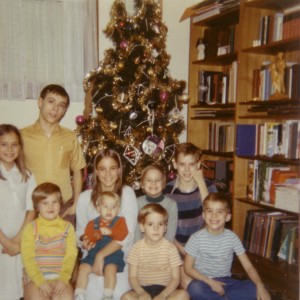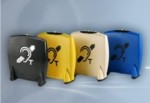 The Comfort Contego is one of my favorite personal listening devices not only because of its sleek design, but because it offers so much versatility. As shown on the left, the unit is comprised of two components: 1) the receiver (far left) and 2) the transmitter (on the right). Both the receiver and the transmitter are equipped with microphones. To amplify conversations that occur in close proximity, the listener uses the receiver as a stand-alone unit to amplify speech, increasing the volume and changing microphone directionality (omnidirectional vs. directional) of the receiver unit as needed. For conversations of interest occurring further away (i.e. lecture, classroom, business meeting), the transmitter is used by the speaker to wirelessly send information to the receiver (up to 75 feet). The user has complete control of the volume and microphone directionality of the transmitter via the function buttons accessible on the receiver.
The Comfort Contego is one of my favorite personal listening devices not only because of its sleek design, but because it offers so much versatility. As shown on the left, the unit is comprised of two components: 1) the receiver (far left) and 2) the transmitter (on the right). Both the receiver and the transmitter are equipped with microphones. To amplify conversations that occur in close proximity, the listener uses the receiver as a stand-alone unit to amplify speech, increasing the volume and changing microphone directionality (omnidirectional vs. directional) of the receiver unit as needed. For conversations of interest occurring further away (i.e. lecture, classroom, business meeting), the transmitter is used by the speaker to wirelessly send information to the receiver (up to 75 feet). The user has complete control of the volume and microphone directionality of the transmitter via the function buttons accessible on the receiver.
 As of January 2011, the Comfort Contego will be packaged with a Telephone Kit, allowing users to directly connect the transmitter to the telephone for wireless transmission of phone conversations to the receiver. Optional TV adapter allows wireless TV listening. The Comfort Contego is a rechargeable personal listening device equipped with lithium-ion rechargeable batteries and charger. The unit may be used with headphones or t-coil equipped hearing
As of January 2011, the Comfort Contego will be packaged with a Telephone Kit, allowing users to directly connect the transmitter to the telephone for wireless transmission of phone conversations to the receiver. Optional TV adapter allows wireless TV listening. The Comfort Contego is a rechargeable personal listening device equipped with lithium-ion rechargeable batteries and charger. The unit may be used with headphones or t-coil equipped hearing  instruments via induction devices such as neckloops. Check out the FAQs about the Comfort Contego as well as the 12-page Contego brochure for more information. Be sure to read up on the advantages of this product over analog systems in the ATE-feature via AudiologyOnline.com. This product is available at Oaktree Products so feel free to call cutomer service at 800.347.1960 or e-mail Oaktree at otp@oaktreeproducts.com for more information. If you are interested in ALDs but don’t have time, this is one product that is worth checking out!
instruments via induction devices such as neckloops. Check out the FAQs about the Comfort Contego as well as the 12-page Contego brochure for more information. Be sure to read up on the advantages of this product over analog systems in the ATE-feature via AudiologyOnline.com. This product is available at Oaktree Products so feel free to call cutomer service at 800.347.1960 or e-mail Oaktree at otp@oaktreeproducts.com for more information. If you are interested in ALDs but don’t have time, this is one product that is worth checking out!






















